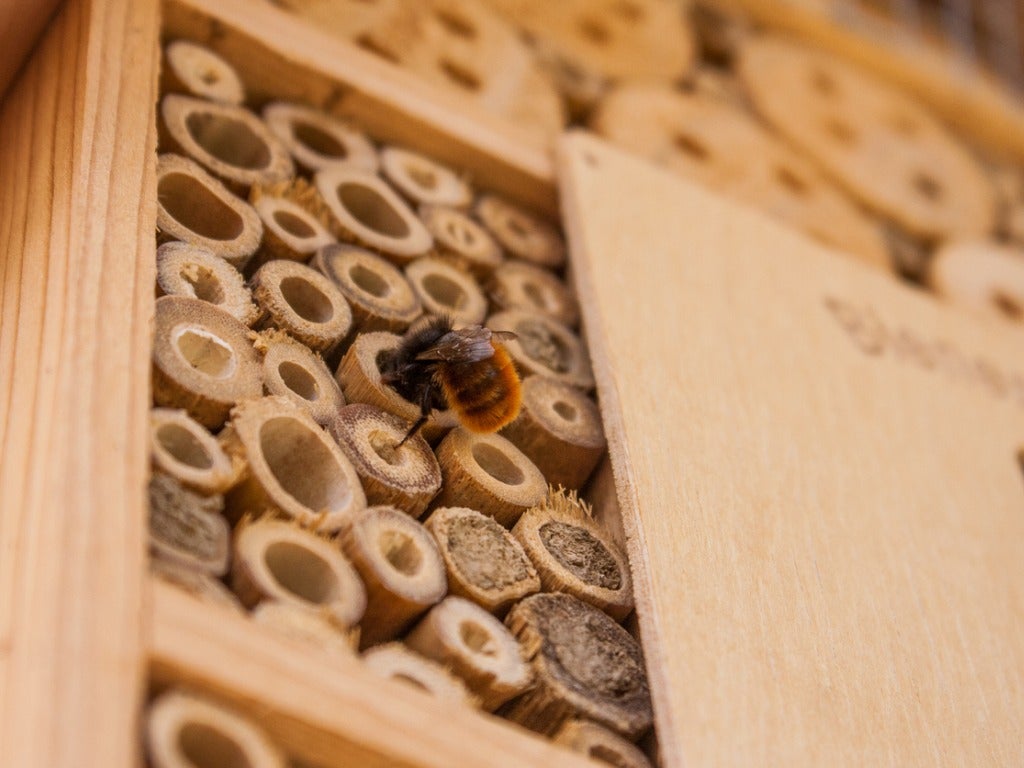DIY Bee Nest Ideas – How To Make A Bee House For Your Garden

Bees need our help. Their numbers are on the decline due to all the chemicals used to grow our food. Planting a variety of blooming plants that flower at different times provides the bees with plenty of food, but they also need a place to call home.
Making a bee nesting box gives the bees shelter to raise their young, ensuring future bee populations. There are a few ways to make a homemade bee house. Don’t panic if you aren’t handy, a DIY bee nest isn’t very complicated. Read on to learn how to make a bee house.
Homemade Bee House Ideas
If you have provided a diverse group of flowering plants, then the bees have a steady supply of food. However, they still need a place to shelter. Most non-parasitic bees dig burrows into the ground. All you need to do to attract this type of bee is to leave some exposed areas of soil undisturbed.
Other types of bees, like cavity-nesting bees, need to have a bee house to entice them into staying for a while. Nesting bees use mud, leaves, and other debris to build walls and create cells. Within each cell resides an egg and lump of pollen.
There are a couple of simple ways to build a DIY bee nest for these solitary nesting bees. When making a bee nesting box, the idea is to provide tunnels the bees can raise their young in.
How to Make a Bee House
The easiest type of DIY bee homes couldn’t be simpler. It is merely a bundle of hollow sticks bundled and tied together. Often, the bundle will contain some type of shelter to keep rain and sun off the homemade house but isn’t absolutely necessary. The bundle of sticks can be put as is out in the landscape for the bees to discover.
Bamboo is a popular choice for this type of bee house, as it is hollow and durable. If you have plants with hollow stems in your yard (raspberries, bee balm, Joe-Pye weed, sumac, etc.), you can even gather some of the dead stems up to make a bee nest.
Sign up for the Gardening Know How newsletter today and receive a free copy of our e-book "How to Grow Delicious Tomatoes".
The downside of this type of DIY nest is the difficulty of telling if anyone’s home. Unless you cut the bundle in half, it is often difficult to determine if bees have made a home inside. A tell-tale sign, however, is if there is a mud, leaf, or resin cap at the tunnel entrance, although not all types of bees cover their entry this way. This type of bee home should be replaced each year in the interest of cleanliness.
Another Homemade Bee House Idea
Another way of making a nesting box for bees requires some tools and a bit of know how. This method requires a wood block with some deep holes drilled partially through it. Once the holes are drilled, you can call the nest complete. If you really want to impress the bees, you can even take it a step further.
If the wood block nest is left as is, it is difficult to see inside and to keep clean. To improve visibility and facilitate cleaning, insert paper straws into the holes. These can be pulled out to check on the bees and easily replaced to keep the home clean and free of disease.
The consistency of the holes often attracts only one type of bee. To gain a more diverse population of pollinators, use different size drill bits to make the holes. Foam can also be used instead of wood to make this type of bee nest. In fact, those who raise pollinators commercially generally use foam, as it is less expensive than wood, easily disposed of, and easy to replace.
There are other ideas for making bee nesting boxes available or just use your imagination. These are just two of the simplest ideas for making a bee nesting box, two that even the least “handy” individual can create.

Amy Grant has been gardening for 30 years and writing for 15. A professional chef and caterer, Amy's area of expertise is culinary gardening.
